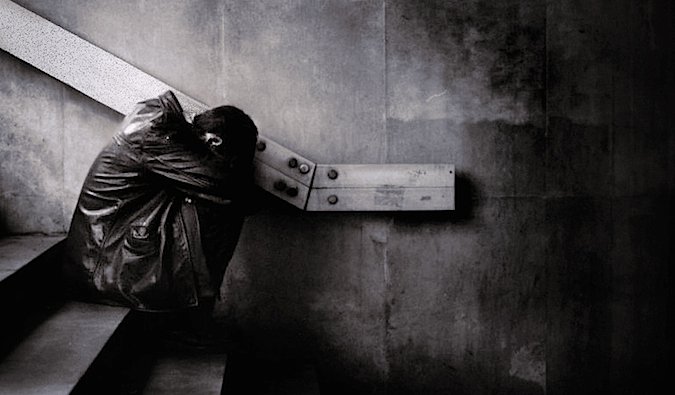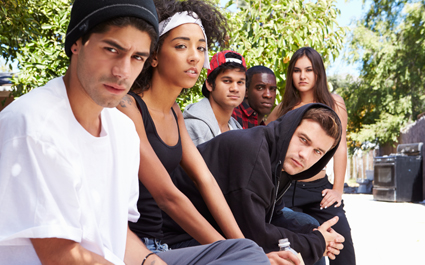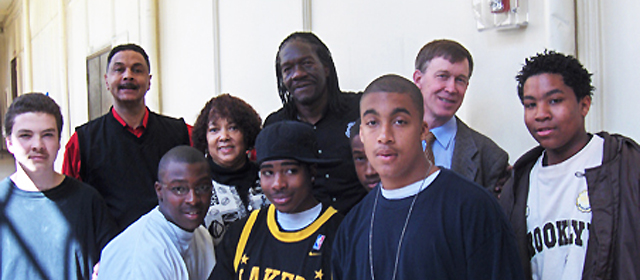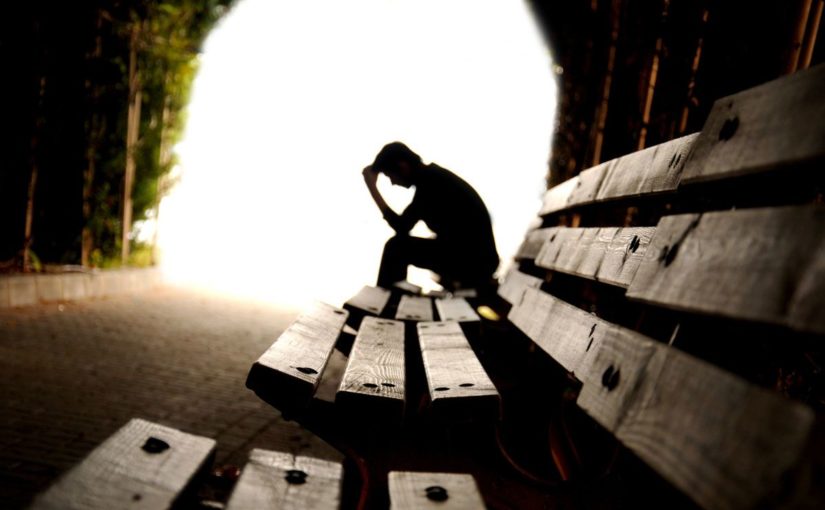The first 2 times I attempted to write this piece, I couldn’t. Writing about the burnout I had experienced literally brought back the brain fog, the emotionally drained state of mind that dragged my body down with it, the ocean of grief and guilt I was drowning in during the worst months and years of my life.
In late 2011, I was working in a dysfunctional behavior school, separated from many of the teacher-counselors from my previous school who I viewed as family. This included my teaching partner Callahan, who became a brother and best friend through some really great and difficult times. I was feeling out of place, angry, and disrespected by the leadership of the organization for various reasons.
Then, in October, my maternal grandmother suffered a major stroke that paralyzed her on the left side of her body. We’d grown much closer after the passing of my mother in 2009, and all the grief I’d swallowed down so I could function during mom’s death was resurfacing uncontrollably in the ER and eventually the ICU of Hillcrest Hospital, watching with uncertainty while my gentle and loving Gramma was hanging on by a thread. By Thanksgiving, I found myself in a depressed stupor and barely able to talk.
By day I was getting cursed out, roughed up in physical restraints, and generally extremely frustrated by problematic leadership and in the evenings I was watching my grandmother’s body and mind betray her bit by bit. I remember when her dementia started, when she had confused me with my younger brother. I thought this was her usual confusion of my name with my brother’s or my uncle’s name. It wasn’t. She really thought I was Micah and she realized it. “Oh Lord, I’m losing my mind…” It was like another knife in an already gaping emotional wound.
To top it all off, I’d failed at romance once again and descended into a spiral with self medication. Every evening I lived in a cloud until bedtime. I stopped hanging out with most of my friends and wasn’t returning calls. When I did talk to them and they asked how I was doing, I was always “fine man, I’m good.”
I was dealing with grief, trauma, loneliness, financial hardship, and embarrassment that I couldn’t get things to work right. Eventually, I was burned out.
Burnout feels just like it sounds. It’s like your insides are literally charred and smoldering-your brain, your lungs, your heart, your gut. It feels like your whole Self is balled up and buried under layers of confusion and loss.
Eventually I retreated into the computer room as a daily routine. I drank and smoked and escaped into random YouTube videos and whatever else you find on the interweb once the rabbit-hole has sucked you in.
The shame you experience makes it really difficult, because you won’t reach out for help, or talk to someone about how you are feeling, for the most part. It wasn’t until a couple of friends were hearing how bad a time I was having and suggested I take leave from work that I decided to talk to anyone. I had to talk to a counsellor and get assessed in order to request FMLA, which I ended up not needing since I had so much sick-time left to use.
If you see yourself in what I just described, you are burnt out and it is affecting your work and your social life. It is making you hard to live with. It is sucking all the motivation out of you and making you a slave to your problems. It’s causing you to be complacent about your health, your finances, your long term goals and dreams. I’m not blaming you at all. I just want you to be real about how badly this is crushing you. I want you to pull out of the nosedive.
You have probably lost interest in things you used to enjoy. You probably lose patience quicker than you used to. You probably feel like there’s nothing you can do to change work, or home, or whatever other situation there is. You are probably doing a lot of escaping into nostalgia, trying to get a hold of feelings from a bygone time when things were easier (Youtube videos of old Transformers episodes was where I went. My mother used to like to watch that with my brother and I). Escaping is probably making you ignore some very real obligations like paying college loans or doing cleaning around the apartment. You are literally sick right now. You need to get healthy and you need to be proactive and assertive about that.
We work in crisis. We see blood, urine, feaces and phlegm. We get screamed at and threatened, experiencing the vicarious trauma that comes with dealing with traumatized clients and mental health consumers. Our bodies crash into other bodies, bone hitting bone and flesh twisting and skin rubbing off on concrete. We examine the scars we get in the mirror and try to sort out the thoughts and feelings. And we are expected to bounce right back from every episode like we aren’t affected. We see things that we can’t unsee. We often feel like no one could relate to our stories. That is sometimes the case. We have to be aware that it’s easy to martyr ourselves and that being a martyr is not heroic. It’s messing up your access to a life that has a lot of beauty and goodness in it.
It’s making you sloppy on the job as well. People are counting on you to keep them safe, whether they are your colleagues, clients, or the general public. You have to operate within very strict protocols on the job-program rules, state and federal laws,Medicaid billing, etc. If you are getting sloppy you can make a career ending mistake, or a mistake that gets you or someone else hurt or killed. If you find yourself not caring, you need to step away.
You are going to have to do some things you might not normally do or have never done before.
Go camping. Start taking yoga. Paint. Write poetry. Find a support group and talk to other people who know what you are going through. Eat whole foods. GET ENOUGH SLEEP. Take walks often. Go to the art museum. Visit friends and family you don’t often get to see. GET ENOUGH SLEEP. Drink more water. Go hear a live band. If you are religious at all, find a good house of worship with a good community. GET ENOUGH SLEEP.
I bet everything I suggested is stuff you already know to do.
When you are burnt out you get stubborn. You’re stubborn because you feel like that will protect you. You are in survival mode, and survival mode is only good for dealing with imminent danger. You do anything that confirms the world view that nothing can change, that all is basically lost. It’s basically emotional self-harm. You make statements and engage in behaviors that perpetuate the burnout. You know you are doing it, too. You have to interrupt it. You have to do something new. It will be uncomfortable at first, mainly because you are challenging your own personal reality, the story you tell yourself about who you are and what the world is like. You are confronting all the terrible things you tell yourself because of the terrible things you have endured.
Don’t self-medicate as a long-term strategy, it doesn’t work. Don’t rely on a new lover to rescue you from your thoughts and feelings, you’ll be sorely disappointed if they let you down. Also, if you attract someone in that state, you are probably attracting someone going through the same stuff. That’s a lot of unhealthy stuff in a relationship. Don’t stay up til 3am every night. The lack of sleep is making you more depressed, and it’s messing with your metabolism. Don’t isolate yourself. Don’t stick it out at a job if you don’t have to. Don’t stay indoors all-day, everyday. Don’t ignore it when your friends and family tell you they are worried about you. Don’t avoid sunshine and fresh air.
Again-you know all of this. You have to get proactive. You have to make the changes.
I don’t self-medicate at all any more. I workout every other day. I am stretching my hands into as many spaces for training in and teaching martial arts and self defense as I can so I can do what I love and earn cash in the process. I am staying close to people with high energy and lots of ambition. I’m not trying to press religion on anyone, but for me that helps to order my existence and have something firm to stand on when everything else feels like it’s going haywire (it usually just feels that way). I get outside when the sun is shining as much as I can. I take B Complex vitamins and Omega 3 supplements. I drink lots of water. I get lots of rest. I hang out with friends who keep encouraging me to be my best self. Otherwise that burnout from 5 years ago will creep back into my consciousness again, wreaking havoc on my internal process and progress. Life is not perfect, but I’m more clear headed about what I can do to make the best of what I have. I feel the bad stuff resurfacing every few days, but I’m a lot better at pushing past it to do something-anything-productive and healthy.
You know this stuff. And if you didn’t know, I hope this gives you some ideas so that you can manage your burnout and rise above it.
What I experienced cost me relationships, shot holes in personal goals, and left me feeling like a loser. If this is where you are, you have power to change it. It may take a gargantuan effort. It may take a longer time than you planned. It may guide you in completely different directions than you planned. That’s fine. Be open to the process. It’s ok to have weaknesses. It’s ok to fail. It’s not ok to quit on yourself. Burnout convinces you it’s over, or close to over. But you still have power. Use it.



